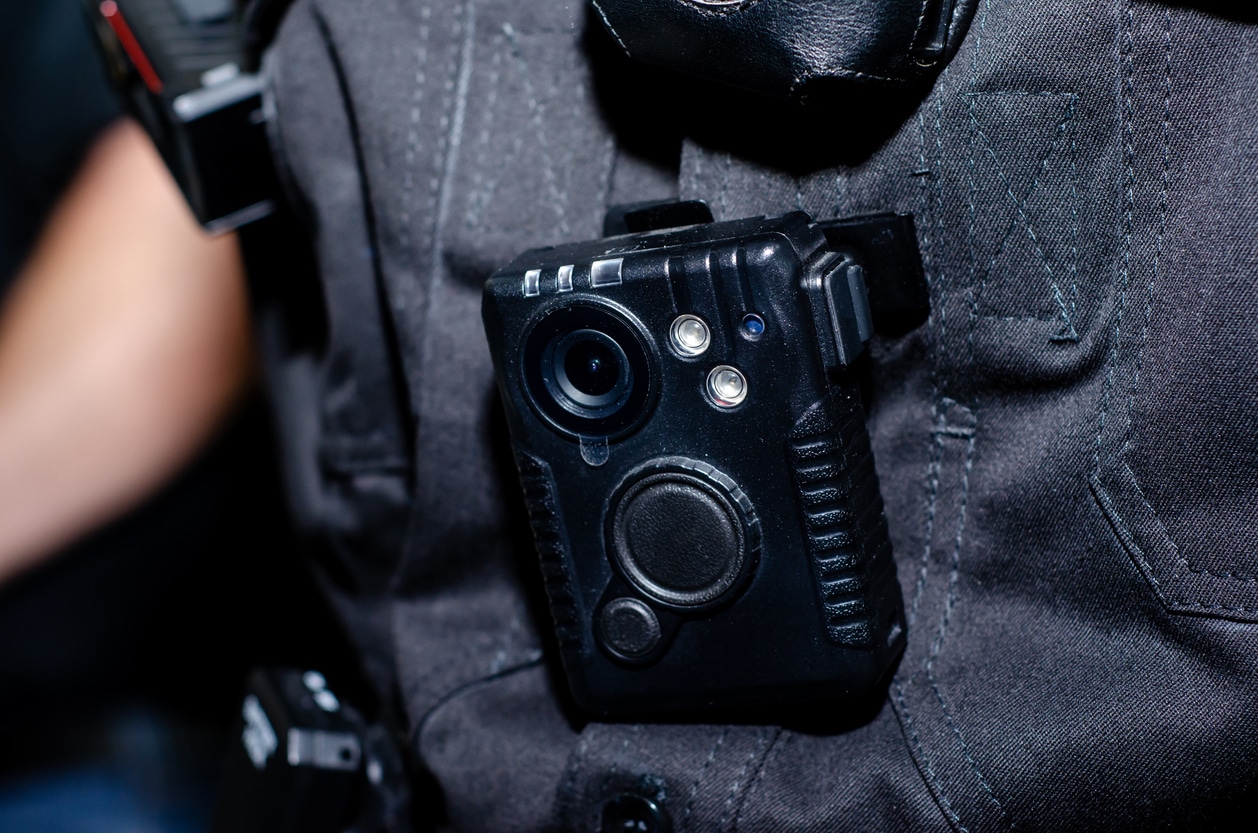In the past two months, police violence has been exposed that could have been plausibly denied were it not for the video from officers’ bodycams.:
In Washington, DC, bodycams documented a police officer shooting a local violence interrupter named Justin Robinson. After Robinson crashed into a McDonald’s, he regained consciousness to find an officer shoving a gun into his face and reached for it. The shots that followed were fatal.
And in Florida, bodycam video showed officers forcibly removing Miami Dolphins star Tyreek Hill from his car less than a minute after pulling him over. They handcuffed and held him for nearly 20 minutes.
These cases, and many others before them, illustrate the essential role of bodycams in forcing transparency– especially in verifying (or debunking) officers’ initial claims.
All law-enforcement actions would benefit from the “disinfectant of sunlight,” as Justice Louis Brandies once wrote. That includes correctional officers and other staff in our nation’s prisons. Consider the rampant sexual abuse recently documented in FCI Dublin, a California federal women’s prison. But as we know from the many reports we receive from individuals in prison, both sexual and physical abuse are disturbingly common across the Bureau of Prisons. Proving it, however – much less forcing any kind of accountability for the prison staff involved – is very difficult.
One reason accountability for abuse is so elusive is the lack of video footage to counteract staff denial. Without bodycams, the only documentation is from prison surveillance cameras. However, the quality of that video is poor and there is no formal policy governing how long footage is stored, only informal guidance of a minimum of two weeks. Also, many assaults occur outside areas surveilled by cameras – and not by accident. Rogue guards take advantage of these gaps
Another factor that works against accountability is an antiquated grievance system.Thanks to the Prison Litigation Reform Act of 1996, which requires that adults in custody exhaust internal opportunities for remedy before going to court, the BOP’s grievance system serves mostly to protect prisons and their employees from lawsuits, not preserve the rights outfits residents. Because prisoners must often start the process by obtaining a paper form from the very staff they are complaining about, it is common for these forms to be refused, conveniently “lost” or rejected for frivolous reasons. The person filing the grievance often is retaliated against.
Still another barrier to accountable prison staff is the lack of public knowledge of what goes on behind prison walls. While most incarcerated people come from cities, federal prisoners are disproportionately imprisoned in rural areas, far from the public scrutiny that local jails often attract.
The Biden administration has paid some attention to police and officer misconduct. Earlier this year, Attorney General Merrick Garland updated the Department of Justice use-of-force policy for the first time in 18 years, telling federal agents they have a “duty to intervene if they see other law enforcement officials using excessive force.” But that kind of culture change doesn’t automatically flow from policy, especially when abuse is as ingrained as it is in the Bureau of Prisons.
A good first step is the Federal Prison Oversight Act, recently approved by both the House and Senate and signed by President Biden. In part, it will create an independent ombudsman’s office, including a secure hotline and online form for both prisoners and their family members to submit complaints and concerns. However, the devil will be in the details, such as funding and implementation. And expanding the Department of Justice’s Inspector General existing audits doesn’t ensure compliance or accountability. One need only consult the ongoing list of unresolved recommendations from past audits.
But complaints submitted via that new process need support to be taken seriously, and that’s where video evidence comes in. Earlier this year, for example, a contraband cellphone video was posted to X, showing a correctional officer slapping a prisoner at Florida’s Hamilton Correctional Institution. As a result, the two officers involved were fired. But it’s illegal for prisoners to have cellphones; the best way to gather this evidence is through bodycams. (Some legislators in Florida introduced a bill to pilot the use of bodycams in a women’s prison in the state where a federal investigation revealed “notorious acts of sexual abuse, including rape, against prisoners.” Imagine if the officers at the federal FCI Dublin prison, called “the rape club” had been required to wear bodycams!) Just last month, the federal Prison Education and Reform Alliance (PERA) received a contraband cellphone video showing what appeared to be a staff-on-prisoner assault at FCI Atlanta. What was disturbing was the nonchalant manner in which two staff members dragged a person by his wrists down the range from one cell to another. We reported the incident to the staff of the Senate Judiciary Committee.
When bodycam video exposes wrongdoing, it should then be made public after disciplinary action or prosecution. Yes, exposure can spark violent protests, as occurred in Washington, DC, following the police shooting of Justin Robinson. But public reaction to the truth is a necessary risk in a democracy.
It’s time to extend our demand for the accountability of our law enforcement personnel into our prison systems. America’s prisons currently operate in the darkness and shadows. Independent and robust oversight is essential to shining a much-needed bright light on the noxious conditions behind the walls of federal prisons. An independent and effective grievance system and mandated body cams for correctional officers will help provide both the necessary motivation to follow the rules and evidence when they are broken.



